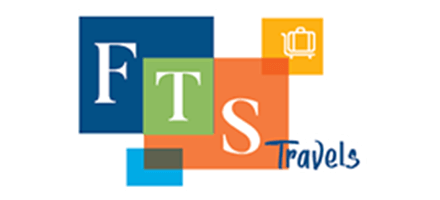U S. prime rate Wikipedia
That occurred while the Fed kept rates steady last fall, and it’s possible mortgage rates could continue to change, noted LendingTree economist Jacob Channel. Fixed-rate financial products, such as many personal loans and auto loans, won’t fluctuate since you lock in your interest rate when you open the loan. Such loans are served by the 12 regional branches of the Fed, which grants this special lending facility for a short period. This period, which is 90 days or less, is known as the discount window.
While most variable-rate bank loans aren’t directly tied to the federal funds rate, they usually move in the same direction. That’s because the prime rate (and LIBOR before it was discontinued) is an important benchmark rate to which these loans are often pegged, having a close relationship with federal funds. But the Fed’s statement also suggested that officials do not think the time for a rate cut has arrived – at least not yet.
For $14.95 a month, eCredable LiftLocker™ adds budgeting tools, identity theft alerts and credit monitoring, among other benefits. The chair of the Federal Reserve has said that while the committee agrees a rate cut this year would be appropriate, it’s unlikely to happen in March. A snapshot of the prime rate can be found on the Federal Reserve’s website. The rate that an individual or business receives will vary depending on the borrower’s credit history and other financial details.
If you have a credit card, an adjustable-rate mortgage, or a private student loan, it probably does. If you watch the news, you undoubtedly hear from time to time that the Federal Reserve has decided to increase or decrease its key interest rate, the federal funds rate. When this is the case, the central bank is trying to either slow economic growth or give the country a financial lift. It has remained robust, which means policymakers might take their time before pivoting to rate cuts. But some banks have already started reducing the rates they pay to consumers, including on some certificates of deposit.
- It has asserted that rates may increase again if inflation does not move progressively lower.
- Every financial institution determines its own rates, but many use the U.S.
- That’s why seeing the impact of a prime rate hike might not be immediately obvious.
- Traditionally, the rate is set to approximately 300 basis points (or 3 percentage points) over the federal funds rate.
- Eurodollars come in various durations, so there were actually multiple LIBOR benchmark rates—one-month LIBOR, three-month LIBOR, and so on.
That’s reserved for the most creditworthy, low-risk corporate customers or high net worth individuals. At CNBC Select, our mission is to provide our readers with high-quality service journalism and comprehensive consumer advice so they can make informed decisions with their money. Every personal finance article is based on rigorous reporting by our team of expert writers and editors with extensive knowledge of financial products.
If you’re an individual with average credit, your credit card may charge prime plus, say, six percentage points. So, our hypothetical customer is paying 10.5% on their revolving credit line. If the Federal Open Market Committee lowers the rate, the customer will enjoy lower borrowing costs almost immediately. Rate posted by a majority of top 25 (by assets in domestic offices) insured U.S.-chartered commercial banks.
Bank Prime Loan Rate (MPRIME)
This includes any student loans, mortgages, savings accounts, and credit cards that are issued with fixed rates rather than variable rates. Debt with a variable interest rate can be affected by the prime rate because a bank can change your rate. This includes credit cards as well as variable rate mortgages, home equity hawkish meaning loans, personal loans, and variable interest rate student loans. When the prime rate goes up, so does the cost to access small business loans, lines of credit, car loans, certain mortgages and credit card interest rates. Since the current prime rate is at a historic low, it costs less to borrow than in the past.
The discount rate, on the other hand, is set by the Fed and is used as a short-term rate (usually overnight) when banks lend to one another. Averages of daily figures.Rate posted by a majority of top 25 (by assets in domestic offices) insured U.S.-chartered commercial banks. Fluctuations https://g-markets.net/ in the prime rate can reflect how tough or relaxed lenders’ financing standards and requirements are. When the prime rate is high, it often makes borrowing a lot more challenging. Because they’re based on the federal funds rate, prime rates also reflect the state of the economy.
Determining the Prime Rate
For instance, the average credit card interest rate was just 11.85% a decade ago, per the Federal Reserve, when the prime rate was 3.25%. Just as a chef begins gumbo with a roux, a bank bases the interest rates it charges for various loans on the prime rate. Prime Rate published in the Wall Street Journal, which is currently 8.50%. Overall, interest rates, as set by the Fed, are expected to move down in 2024 in neither rapid nor dramatic fashion. If inflation were to unexpectedly heat up that picture could change. A severe recession, which is also not expected, might equally prompt the Fed to cut rates at a faster pace.
What you should do when rates go down
Blueprint is an independent publisher and comparison service, not an investment advisor. The information provided is for educational purposes only and we encourage you to seek personalized advice from qualified professionals regarding specific financial decisions. Whether or not the rate on your specific debt will rise or fall depends on the nature of your obligation. He specializes in making investing, insurance and retirement planning understandable.
During times of recession, prime rates are generally lower, hitting 3.25% during the Great Recession. The fed funds rate is the overnight rate banks and other financial institutions use to lend money to each other. The process is a constant electronic flow of money that ensures that each bank has sufficient liquidity to operate from day to day. The prime rate is determined by the current federal funds target rate, which is set by the Federal Reserve. This rate guides the interest rates that banks charge each other when they lend money overnight to meet Fed capital reserve requirements.
Banks also take into account your creditworthiness—the more likely you are to pay them back, the lower the rate they would charge and vice versa. As of November 1, 2023, the current prime rate is 8.50%, according to The Wall Street Journal’s Money Rates table. This source aggregates the most common prime rates charged throughout the U.S. and in other countries. A recession would likely be a positive in taming inflation, but it would also present risks to the Fed’s goal of maintaining full employment.
Prime Rate History
For example, if one bank wants more credit card business on their books while another does not, they will quote different credit card rates, even though they are working off the same prime rate. Note that certain lending products, like fixed rate mortgages and some student loans, are based on measures like SOFR and are less tied to the movement of the prime rate. “This is unlike other rates that move daily/weekly according to short term financial market, supply and demand conditions,” says Garretty. Still, some economists said the Fed’s policy statement underscored that rates are currently high enough to rein in inflation, even as officials appear to be tamping down expectations for near-term cuts. While the prime rate affects the interest rate lenders set for financial products, you can still influence the rate you receive by improving your credit score. The higher your credit score, the better (and lower) interest rates you’ll receive on existing accounts with variable rates, as well as new account openings.
The language in the Fed’s statement signaled to some economists that the Fed may hold off longer than expected until it makes its first cut. Of course, most credit cards set variable ranges for interest rates, meaning you can receive an APR anywhere on a preset scale, such as 12% to 24%. Consumers with excellent credit will likely qualify for rates as low as 12%, whereas someone with good credit may receive rates closer to 24%. While the interest rate on most financial products is dependent on the prime rate, the actual rate you receive is rarely the same exact amount. Typically, your interest rate is above the prime rate, but the amount can be greater depending on the lender. For instance, the average credit card APR on accounts assessed interest is currently 15.78% — the prime rate plus 12.53%.
The Intercontinental Exchange (ICE) group asked several large banks how much it would cost them to borrow from another lending institution every day. Therefore, the rate for overnight lending among commercial banks goes down. If the Fed wants to increase the rate, it could do the opposite by going into the open market and selling government securities. This reduces the amount of cash in the financial system and encourages banks to charge each other a higher rate. According to U.S. regulations, lending institutions have to hold a percentage of their deposits with the Federal Reserve every night.





